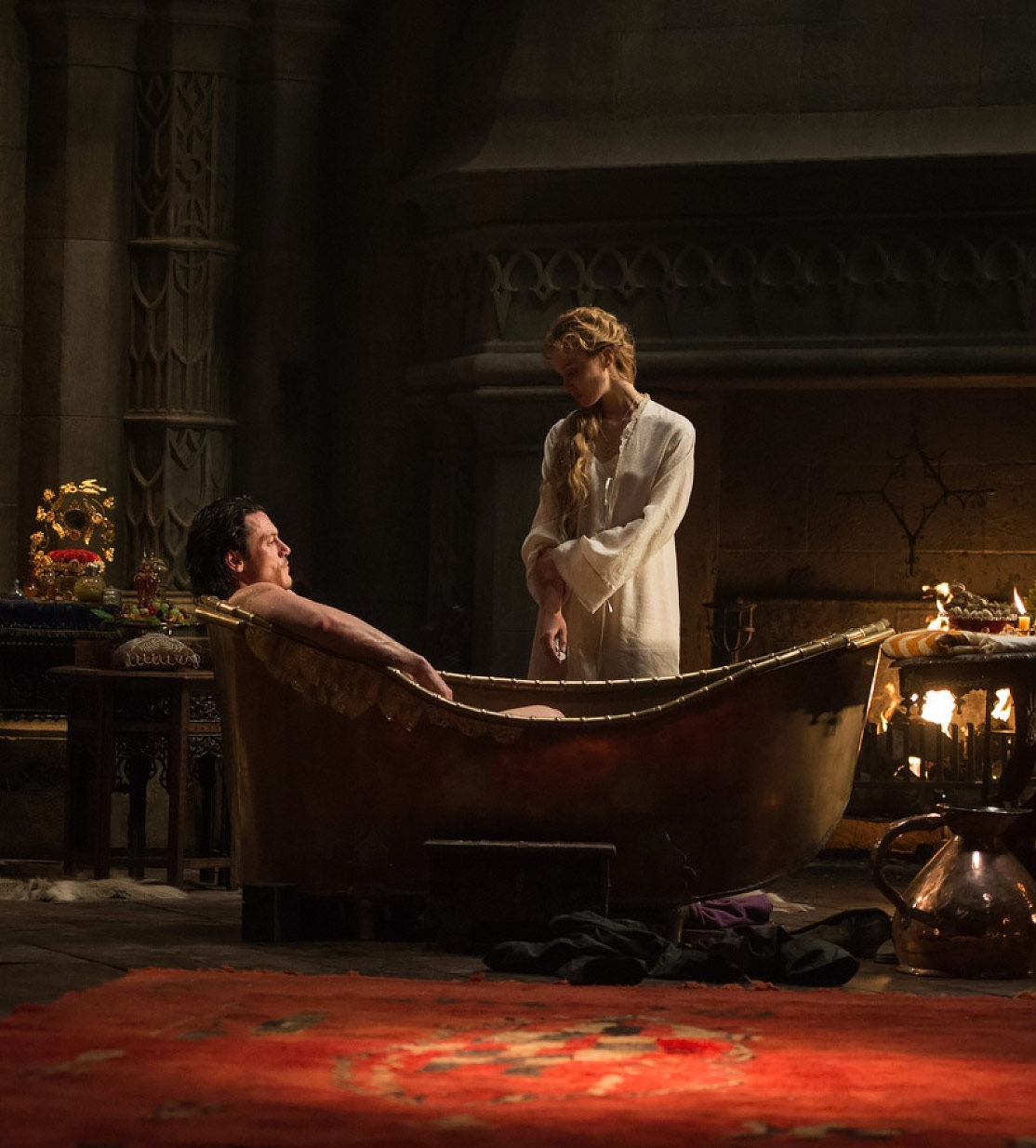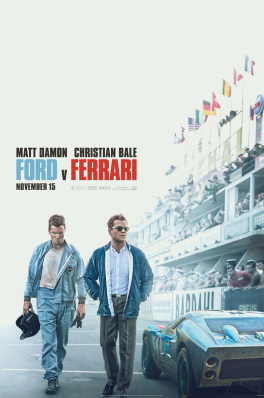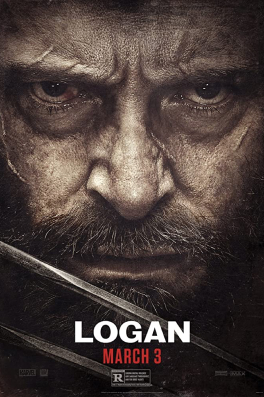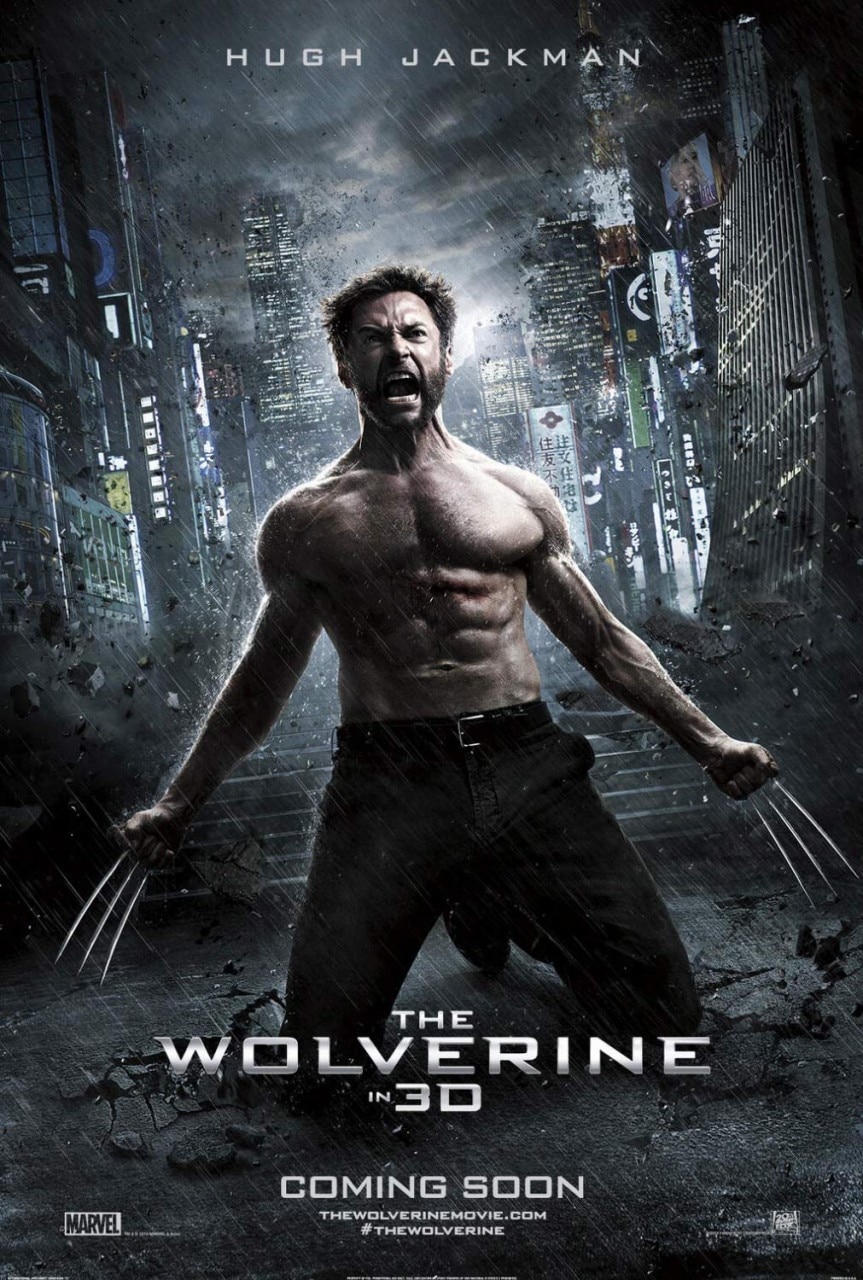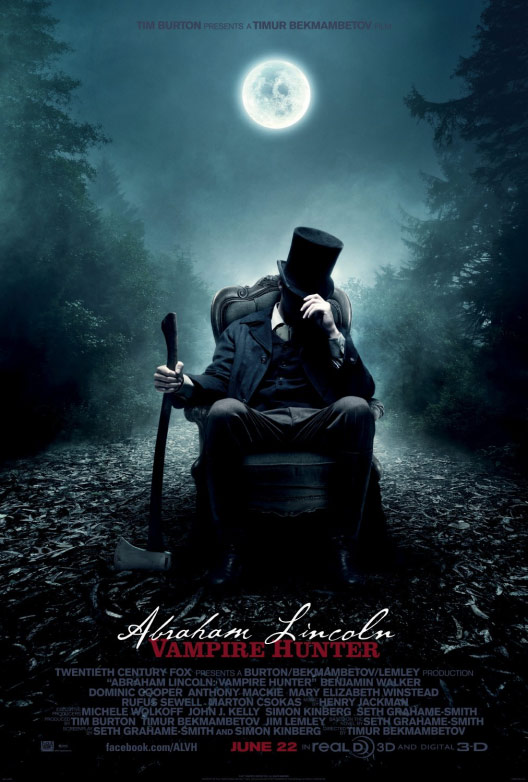Dracula
Untold
Director Gary Shore
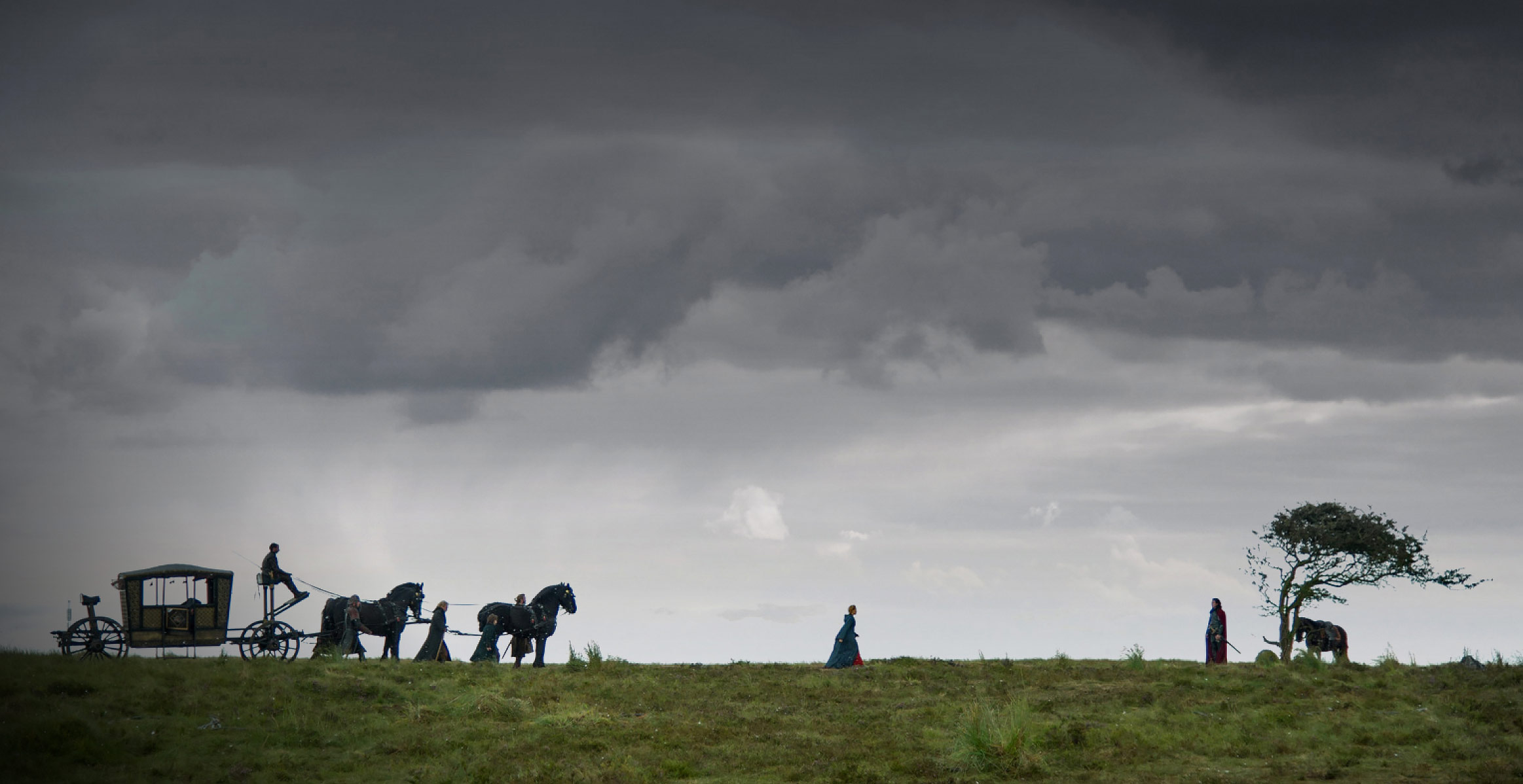
Sometimes the world no longer needs a hero.
Prince Vlad III
Sometimes what it needs...is a monster.
Introduction Text by
SASHA GIBSON, Unit Publicist
Since the publication of Bram Stoker’s definitive “Dracula” in 1897, one of the most enduring literary and popular characters of our time has been explored in film, animation, literature and music, and is as relevant today as he was when his creator spawned a cultural phenomenon almost 120 years ago.
Although Dracula’s presence remains ubiquitous in culture, it is surprising that the origins of this undead icon have never been explored on film. While the man history calls Dracula, for all intents and purposes, was actually a real historical figure, just as terrifying to millions of people are the vampires of ancient myth.
Found in almost every culture and language on Earth—from the Babylonians’ Lilitu, a succubus who thrived on babies, to the iron-toothed Asasabonsam of the Ashanti peoples of Ghana1—the legend of blood-sucking creatures of the night may be traced back thousands of years.

reflections
on the vampire
legend

All images and videos © Universal Pictures
It was not until the 10th century, in Slavic Europe, that the word “vampire” first appeared in modern language.
Audouy is naturally attracted to stories that are set in worlds that draw you in by their originality. He shares: “I seem to be drawn to films that challenge us to imagine alternate worlds, either set in a fantastic, foreign or historical setting—where we can experience the particular closed narrative—but then the setting stays with us as a place where you can imagine the characters continuing their lives.”
Chapter1
Stage Build
Dracula’s
Castle
Gary Shore wanted to do something different with Dracula’s Castle, something that was exotic and unique, so we went away from the Orthodox look toward something more Eastern European, with sharper facets and triangular shapes.
The design started out quite alien, very unusual, and throughout the process it became more and more grounded and plausible. You could believe it existed.

© Universal Pictures

© Universal Pictures
The Great Hall was the starting point from which Castle Dracula was created, and while the majority of the castle is CGI, the Great Hall was built entirely for camera. The attention to detail is minute, down to the reliefs in the walls that were re-created from genuine stone reliefs from a Romanian church, and the finish of the walls, painted to convey dustiness, current with the thinking that granite stone was used to build these great medieval structures.
In his set designs, Audouy played around with four visual motifs, some of which feature heavily in the Great Hall, with the most iconic being fangs.
On closer observation, however, the roofless Great Hall and the motifs at work subliminally convey a sense of Vlad’s dark past, foretelling of a darker future.

© Universal Pictures

© Universal Pictures
“Another aspect to the roofless design was a means of acknowledging the original Vlad III. He had this open court, and in that area he had two dozen impaling poles with the bodies of his enemies impaled upon them. He would dine amongst them, and according to the old legends, he would drink the blood that flowed from them.”
Gary Shore

© Universal Pictures

There are far worse things awaiting man than death.
Count Dracula, Dracula (1931)
Chapter2
Deleted Scene
Baba Yaga &
the Village


© Universal Pictures
In a deleted scene, Vlad Tepes happens upon the carnage of a peasant village that has been pillaged by Ottoman invaders.
To create this, we took over the Ulster History Park in Omagh, and erected a full-scale church, built from steel, cement board and plaster so that it would resist the inferno provided by the special effects department.
The history park was a great find as it provided a handful of historically accurate structures that we clad and look like medieval Romanian architecture.

© Universal Pictures
After the wander through the village, Vlad was to meet Baba Yaga, the witch, a beloved character from Eastern European folklore. I worked with Artist Rob Bliss to imagine a delightful cottage for the witch, elevated with hundreds of supernatural chicken-like feet.

© Universal Pictures

© Universal Pictures
The interior of the cottage was built on stage, while a partial exterior was pre-fabricated in the construction shop and erected adjacent to a brook at the Ulster History Park. The façade was covered with hand-painted ornamentation to create a structure reminiscent of a Gypsy wagon.
Chapter3
Deleted Scene
Broken Tooth
Mountain
The second largest set piece built for camera was the the Master Vampire’s cavernous space inside Broken Tooth Mountain, in which the Master resides and where the legend of Dracula begins and the mortal life of Prince Vlad ends.
I imagined that Broken Tooth mountain would be made from the same geometric rocks as those found at Northern Ireland’s Giant’s Causeway, which afforded us an opportunity to shoot at the UNESCO World Heritage Site.


© Universal Pictures

© Universal Pictures
The Master Vampire whom Vlad meets was originally written as the Roman Emperor Caligula, who had been cursed to reside in this underground lair for all eternity. I designed a cavernous space filled with stairs descending through crumbling Roman ruins and oversized Corinthian columns.
To add a supernatural flair, I added cancerous spikes eating away at the architecture. This deadly-looking mold was created by affixing thousands of plastic bird-control spikes to the scenery. These are strips that are used to prevent pigeons for alighting on the ledges of buildings and monuments. Believe it or not, the effect actually worked beautifully.
At the center of the set was built an ornate mosaic pool — a sort of ceremonial blood receptor that I imagine was purposed to collect the cursed blood of undead vampires.
This entire sequence was sadly cut from the movie and replaced with a completely different set piece that we designed and built in London.

Chapter4
Location
An Ancient
Chapel

© Universal Pictures
One of my favorite sets was a chapel built into a four-hundred-year-old barn at a farm near Belfast.
An “as-stone” apse was built into the back of the structure, to frame a calvary that we sculpted, accurate to the medieval vernacular of the period.
We purchase hand-crafted terra-cotta tiles from Morocco that were shipped to our location in Northern Ireland. The tile was delicate, and cracked naturally, which added a decaying realism to the scenery.
An effigy of St. Peter was hand-painted on a wood backboard by our scenic artist Rohan Harris — one of many beautiful hand-painted murals and ornaments he created for the film.

© Universal Pictures

© Universal Pictures
Set Decorator Paki Smith sourced hundreds of scrolls to create a library on a mezzanine we build into the location, overlooking the chapel below. Hand-forged chandeliers were built to create the illusion of a candle-lit space.
Chapter5
Location & Stage
The Sultan’s
Camp

© Universal Pictures
A challenging part of the story was to convey the scale and pageantry of Mehmed the Conqueror’s march into Romania.
We knew we would need dozens of elaborately detailed tents and flags, which were designed by Paki and fabricated by artisans in India. The prop team became skilled at installing the tent city at various locations to tell the story of the nomadic nature of Mehmed’s army on the march, which sometimes required the assistant of jackhammers to help secure the tents into rocky terrain.

© Universal Pictures

© Universal Pictures

© Universal Pictures

© Universal Pictures
The interior of Mehmed’s tent was erected on stage, and dominated by a massive map table depicting Mehmed’s campaign, following the Danube River’s path as it wound through Europe.
The engraved copper map table was built by “Propshop” — a specialty manufacturing company at Pinewood studios — and featured delicate naval warships and ivory miniatures of the fortresses and capitols of medieval Europe.
“No man knows till he experiences it, what it is like to feel his own lifeblood drawn away into the woman he loves.”
Bram Stoker, “Dracula”

© Universal Pictures
Many of the furnishings inside Mehmed’s tents were purchased by Paki’s team from shopping trips to antique bazaars in Marrakesh, Morrocco. I designed custom jali screens to break up the space and create an appropriate venacular for these sets.
A sword-fight in one of Mehmed’s tents required the manufacturing of tens-of-thousands of silver coins, emblazoned with the profile of Vlad Tepes.


© Universal Pictures
Chapter6
Built Set
Refuge at the
Monastery
Perhaps the biggest challenge was building the monastery that would feature in the final act of our story. A location was selected at an abandoned stone quarry near Belfast. It provided the texture of cliff walls behind the set, but also gave the illusion of a being in a remote and mountainous location.
Unfortunately disaster struck halfway through construction. The sheer quarry walls flanking the set began to give way over a series of heavy storms that hit the area.
Consulting with Gary and the producers, we made the difficult decision to abandon the location and re-erect the set in a parking lot in Belfast. This upended our shooting schedule, and the monastery scenes were pushed to the end of the shooting schedule.

© Universal Pictures

© Universal Pictures


Below: Concept Art by Ravi Bansal
© Universal Pictures
The monastery was designed in 3D so that virtual set extensions could be seamlessly incorporated into the shot compositions, creating the sense of a much larger set than was actually constructed.
The top of a massive tower was built on stage, which would be “ground zero” for Vlad’s showdown with Mehmed’s invading army.

Chapter7
Specialty Props
The
Battlefield

© Universal Pictures

© Universal Pictures
For a sprawling battle scene between hundreds of undead Romanians and the invading Ottoman army, we took over 20 acres of sheep pasture and installed dozens of defensive spikes, as well as an Ottoman battle camp dominated by a massive iron cannon.
The cannon was rigged by SPFX to angle into position, and then “fire” with flame shooting out of the jaws of a decorative lion’s head.

© Universal Pictures
“Dracula: Untold” was an unforgettable opportunity to work and live in beautiful Northern Ireland. I have such fond memories of my collaborations with such an incredibly talented crew of the artists and craftsmen responsible for building this world.
Art Department Credits
- Supervising Art Director
- Paul Inglis
- Art Directors
- David Doran
- Heather Greenlees
- Michael Turner
- Assistant Art Directors
- Amanda Dazely
- Jo Finkel
- Standby Art Director
- Laura Ng
- Set Decorator
- Paki Smith
- Set Decorating Art Director
- Elaine Kumishko
- Modelmaker
- Donal McMullan
- Concept Artists
- Igor Alban-Chevalier
- Ravi Bansal
- Rob Bliss
- Tim Browning
- Luigi Marchione
- Dermot Power
- Norman Walshe
- Jim Carson
- Draughtsmen
- Andrew Ackland-Snow
- Gavin Dean
- Dominic Masters
- Richard Hardy
- Storyboard Artists
- Stephen Forrest-Smith
- David Allcock
- John Coven
- Simon Duric
- Douglas Ingram
- William Simpson
- Graphic Designers
- Gemma Kingsley
- Jim Stanes

